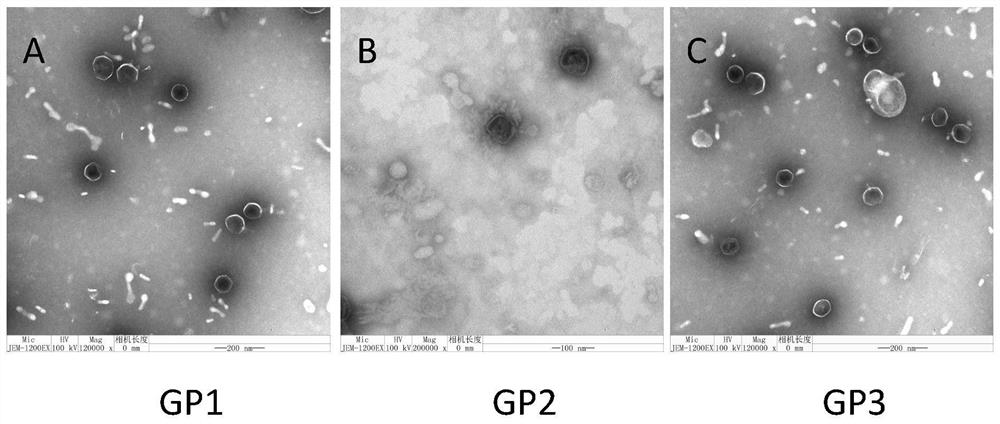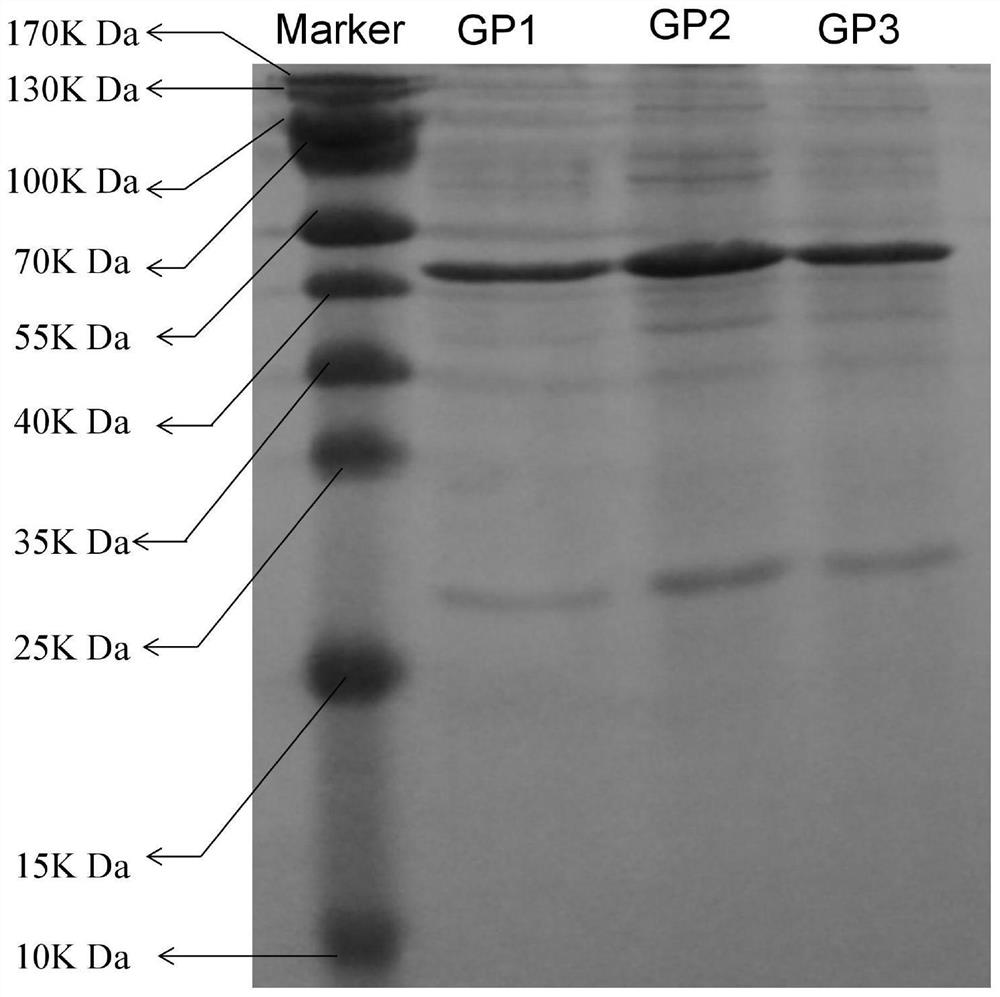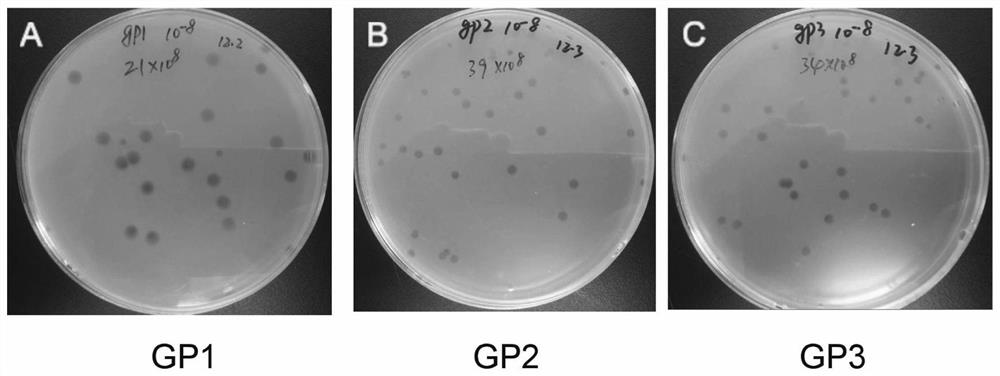Novel R. solanacearum bacteriophage and its composition and application
A technology of R. solanacearum and bacteriophage, applied in the field of microbiology
- Summary
- Abstract
- Description
- Claims
- Application Information
AI Technical Summary
Problems solved by technology
Method used
Image
Examples
Embodiment 1
[0059] Example 1: Isolation and purification of phage
[0060] Sample pretreatment: Take 30g of Jiangtian soil samples from Anqiu City, Shandong Province, Fuyang City, Anhui Province, and Chongzhou City, Sichuan Province respectively, soak in 100ml of sterilized 0.9% NaCl, and let it stand overnight in a refrigerator at 4°C Centrifuge at 4000rpm at room temperature to take the supernatant for later use.
[0061] Isolation of phage: Take 20ml of supernatant from the above 3 materials respectively, filter with 0.22μm filter membrane, add to 20ml of 2×TSB liquid medium. Add 200 μl of R. solanacearum "3-2-1" in the logarithmic phase to the material containing Anqiu City, Shandong Province (R. solanacearum from ginger blast, provided by Sichuan Agricultural University ) bacteria solution, add 200 μl of Ralstia solanacie “5-2-2” in the logarithmic phase to the material containing Fuyang City, Anhui Province (Raleria solanaceae derived from ginger Agricultural University provides) ...
Embodiment 2
[0063] Embodiment 2: Electron microscope observation of phage
[0064] Take the phages prepared in Example 1 for electron microscope observation: take 20 μL of the sample and drop it on the copper grid, wait for it to settle naturally for 15 minutes, use filter paper to absorb the excess liquid from the side, and add 1 drop of 2% phosphotungstic acid (PTA) to the copper grid , stained for 10 minutes, sucked the dye solution from the side with filter paper, and observed with electron microscope after drying: the results are as follows: figure 2 As shown, GP1 bacteriophage has a regular polyhedral head structure and a short tail, the diameter of the head is about 60-70nm, and the length of the tail is about 15-20nm ( figure 2 -A); GP2 bacteriophage has a regular polyhedral head structure and a short tail, the diameter of the head is about 60-70nm, and the length of the tail is about 15-20nm ( figure 2 -B); GP3 bacteriophage has a regular polyhedral head structure and a short...
Embodiment 3
[0065] Example 3: Extraction and sequencing of phage genome
[0066] Take 100 mL of each phage prepared in Example 1, add DNaseI and RNaseA at a final concentration of 1 μg / mL, incubate at 37°C for 60 min, add 5.84 g NaCl (final concentration 1 mol / L), dissolve and place in an ice bath for 1 h. Centrifuge at 11,000 rpm for 10 min at 4°C, and transfer the supernatant to a new centrifuge tube. Add solid PEG8000 (final concentration 10%, that is, add 10g to 100mL), after complete dissolution, ice bath for at least 1h. Centrifuge at 11,000 rpm for 20 min at 4°C, and resuspend the pellet with a small amount of SM solution. Add an equal volume of chloroform and isoamyl alcohol for extraction, shake gently for 30 s, centrifuge at 8000 rpm for 1 min, absorb the supernatant, and repeat the extraction until clarification. Add DNase I and RNase A again to a final concentration of 1 μg / mL, and react at 37°C for 30-60 minutes. Add EDTA to a final concentration of 20mmol / L (that is, add ...
PUM
| Property | Measurement | Unit |
|---|---|---|
| molecular weight | aaaaa | aaaaa |
| diameter | aaaaa | aaaaa |
Abstract
Description
Claims
Application Information
 Login to View More
Login to View More - R&D
- Intellectual Property
- Life Sciences
- Materials
- Tech Scout
- Unparalleled Data Quality
- Higher Quality Content
- 60% Fewer Hallucinations
Browse by: Latest US Patents, China's latest patents, Technical Efficacy Thesaurus, Application Domain, Technology Topic, Popular Technical Reports.
© 2025 PatSnap. All rights reserved.Legal|Privacy policy|Modern Slavery Act Transparency Statement|Sitemap|About US| Contact US: help@patsnap.com



